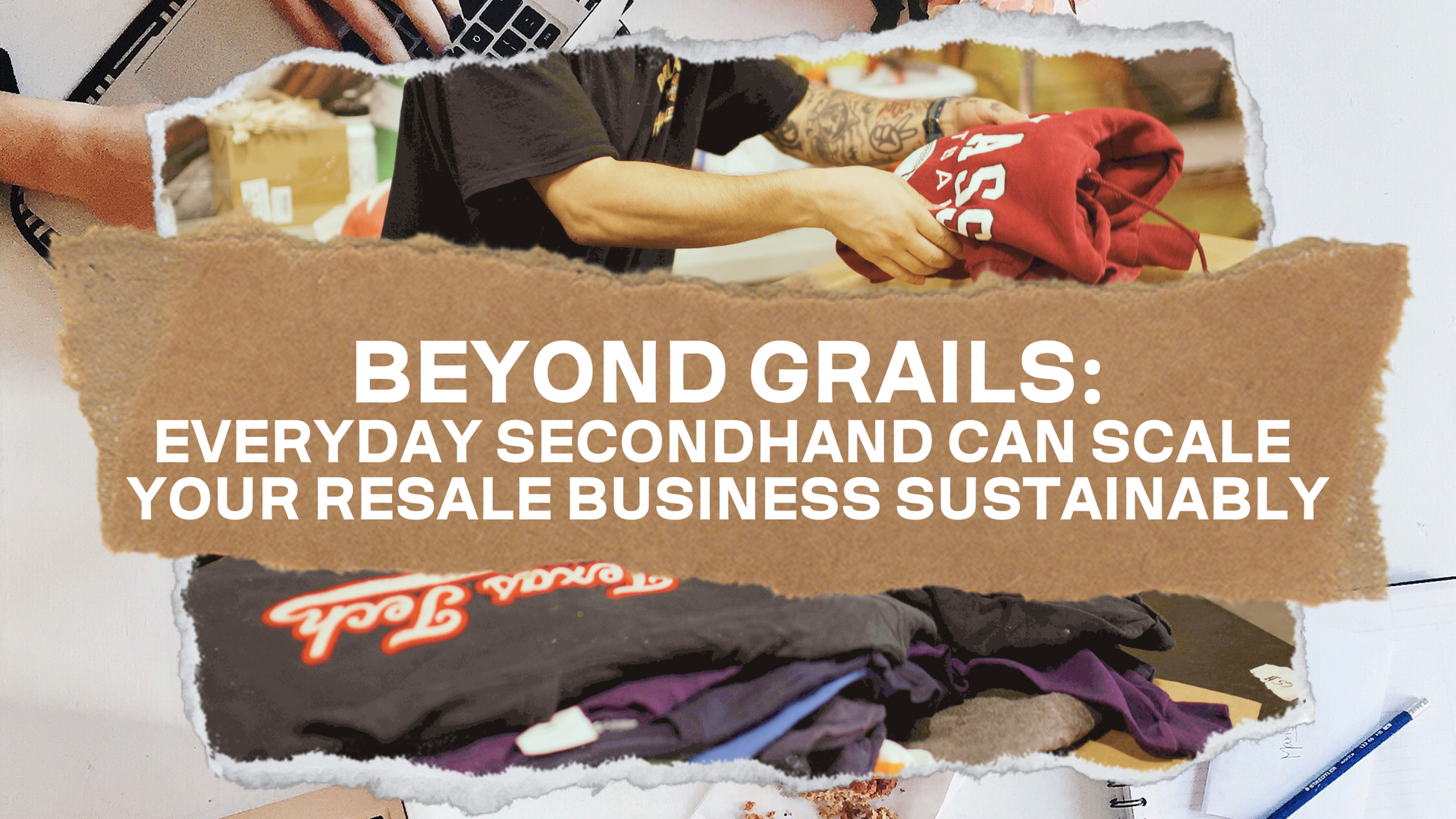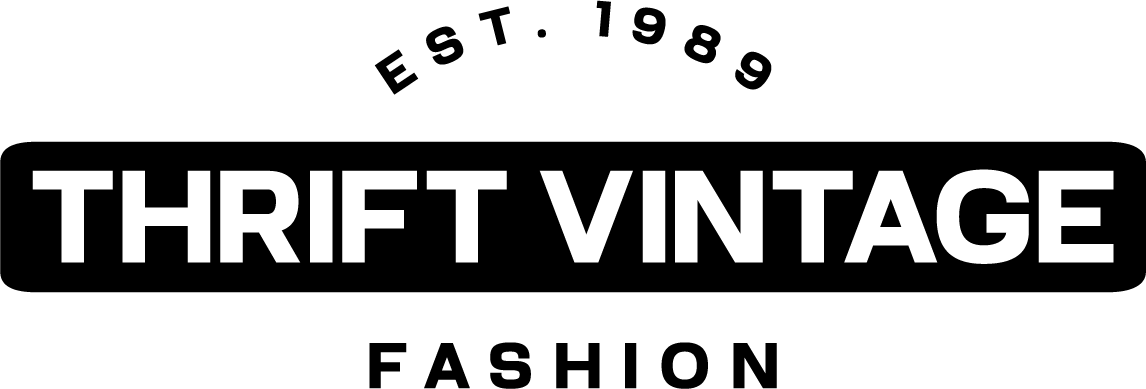
Beyond Grails: How Embracing Everyday Secondhand Can Scale Your Resale Business Sustainably
Introduction: Building a Business Like a Steady Stream, Not a Single Wave
Think of building your resale business like constructing a steady, flowing river rather than a single crashing wave. While waves are thrilling and powerful, they’re also unpredictable—they surge, then retreat, leaving an uncertain impact. In contrast, a river flows consistently, providing a reliable source of life and growth. Similarly, depending solely on high-ticket, rare pieces may create occasional waves of income, but mastering the sale of everyday secondhand items allows for a constant flow, building a solid foundation that’s resilient and scalable over time.
This shift toward “everyday secondhand” isn’t just practical—it’s a proven strategy that other industries have used successfully. Just look at retail giants like Costco or grocery stores: while they certainly have big-ticket items, the real profit lies in the everyday essentials that bring people back consistently. By creating a shop that offers reliable, sought-after pieces at approachable price points, you establish a brand that customers turn to regularly, building trust and encouraging repeat purchases.
This blog post will walk you through the benefits of integrating this consistency into your resale strategy, with tips on inventory, pricing, and brand building that allow you to scale sustainably.
1. The Case for Consistency: Why Everyday Secondhand Items Matter
-
Building a Reliable Revenue Stream
Just like grocery stores rely on staples like milk and bread, everyday items can provide your business with a predictable revenue stream. Regular sales of accessible, in-demand items give your business a strong financial foundation, allowing you to reinvest in higher-ticket items without depending on them solely for income. -
Attracting Repeat Buyers
Consistent availability of reliable, stylish pieces makes your shop a trusted source for secondhand shoppers. When customers know they can come back to your shop for good finds week after week, they’re more likely to return and recommend you to others. -
Wider Appeal, Greater Reach
Focusing only on grails can narrow your audience, as only certain buyers are willing to spend big on unique pieces. Everyday pieces open your inventory to more potential customers, allowing your brand to appeal to a broader range of buyers who may turn to you for staple items over time.
2. Developing an Everyday Secondhand Inventory Strategy
-
Sourcing for Success
Start by sourcing items that balance quality with mass appeal. Look for brands, styles, and categories that have consistently high demand, like casual wear, outerwear, and athleisure. Consider a mix of vintage and modern brands that maintain popularity without the “rare” label. -
Daily Listings for a Steady Flow
Consistency isn’t just about the items you sell—it’s also about the way you list them. Aim to list new items daily to increase visibility on resale platforms. Many platforms favor active sellers in search algorithms, so maintaining a regular listing schedule can increase exposure and drive more traffic to your shop. -
Balancing Grails with Everyday Items
Having grails in your shop is still a great way to attract buyers, but by balancing these with everyday items, you can build a store that appeals to both types of customers. For example, a shopper drawn to your store by a rare find might also pick up a few basics, adding to their cart and boosting your average order value.
3. Pricing Strategies for Sustainable Growth
-
Finding the Right Price Point
When it comes to everyday items, pricing is key. Start by researching similar items to set a competitive price that will still allow you a healthy profit margin. Consider bundling similar items or offering discounts for multiple purchases to increase volume. -
Profit through Volume
While high-ticket items bring high individual profits, everyday pieces can often sell in larger volumes. Over time, this can lead to a consistent and reliable revenue stream, helping you grow and reinvest in your business without waiting on sporadic high-end sales. -
Seasonal Adjustments
Pay attention to seasonality with your everyday items—lighter clothes in spring, sweaters in fall—to keep your inventory moving and to avoid holding onto stock too long. This approach aligns well with customers' buying habits and can help you make consistent sales all year.
4. Building a Brand That Reflects Consistency and Style
-
Developing a Cohesive Aesthetic
A visually appealing, cohesive shop helps to build a recognizable brand. Present your items with consistent photography and descriptions to make it easy for shoppers to navigate and recognize your style. A balance of basics and standout pieces can communicate that your shop is a go-to for both unique finds and dependable essentials. -
Engage with Your Audience Regularly
Engage with your audience by showcasing both the everyday and the rare finds on your social media or website. Highlight the value of each type of item in different contexts, whether it’s how to style a rare vintage jacket or the versatility of a well-loved pair of jeans. This helps buyers see your shop as a reliable destination for any occasion. -
Showcase Your Knowledge of Trends
Stay current with fashion trends, both seasonal and ongoing, so you can stock items that align with what’s in demand. Everyday secondhand pieces that reflect these trends—like color palettes or popular cuts—are more likely to sell quickly, adding to your brand’s appeal as a trend-conscious, sustainable business.
Conclusion: Build Long-Term Success by Embracing Everyday Secondhand
Shifting your focus from grails to everyday secondhand can be the difference between a side hustle and a sustainable, growing business. While rare items will always hold their allure, the true key to scaling lies in consistency—consistently listing quality everyday items, building a reliable revenue stream, and creating a shop that buyers can trust for all their secondhand needs.
So, embrace the blend: let your grails shine, but lean into everyday pieces for steady, scalable growth. This balance can help you create a thriving resale business that’s built to last.
